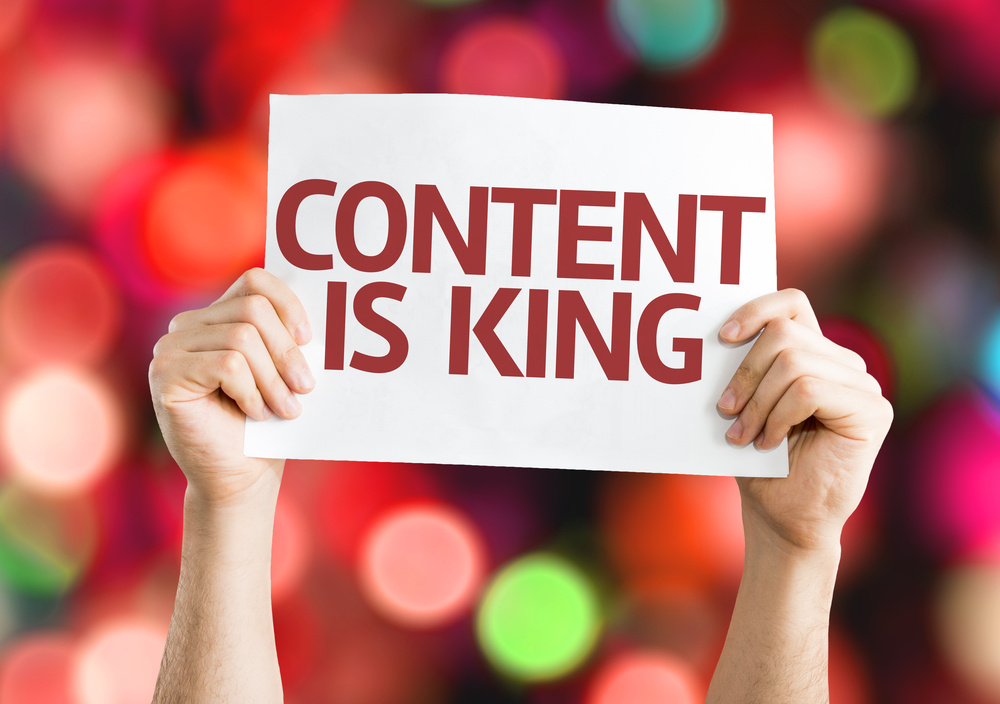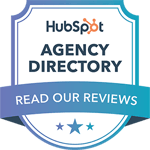
Content has become a powerful way to grab the attention of potential customers and turn them into buyers. While basic websites and generic materials sufficed in the past, today, companies need to take advantage of various B2B content types to diversify their activity, effectively guide buyers through their journey, and maintain long-term interest.
B2B content marketing focused on traditional materials, which needed more depth and interactivity than modern buyers seek. Over the past decade, content marketing has undergone a significant transformation. As the buyer's journey has become more complex and digitally driven, B2B marketers have had to adapt their content strategies to stay ahead of the curve.
Importance of Buyer Journey and B2B Content Types
Content in modern B2B marketing serves as the foundation for how businesses communicate their value proposition, showcase their expertise, and address their customers' specific needs and pain points.
Buyers are now more informed and discerning than ever, relying on various digital touchpoints to research solutions and make purchasing decisions. According to the 2022 B2B Buyer Behavior Survey by Demand Gen Report, 31% of businesses are allocating more time to online research, with web searches (51%), vendor websites (36%), and peer input (32%) remaining pivotal in the decision-making process.
This change means B2B content needs to be top-notch, super relevant, and easy to find. Companies that can nail diverse content marketing—stuff that educates, engages, and guides potential customers through their buying journey—are the ones who'll really stand out. Knowing what your audience wants and tracking things like leads and engagement can seriously boost your content's impact and lead to some real content marketing wins.

What is B2B Content?
Various types of B2B content include diverse materials crafted by organizations to inform, educate, and persuade their audience. This content can take different forms, from blog posts and whitepapers to videos and podcasts, and serves to educate, engage, and ultimately convert prospective customers.
The strategic role of B2B content is to establish thought leadership within the industry, effectively address specific pain points, and ultimately drive lead generation and customer engagement.

- Top of The Funnel (TOFU): Attract and educate potential customers with valuable content like blog posts and videos to increase brand awareness.
- Middle of The Funnel (MOFU): Provide detailed content, such as whitepapers and case studies, to aid consideration and decision-making and boost conversion chances.
- Bottom of The Funnel (BOFU): Maintain customer relationships by providing relevant content to foster engagement, loyalty, and advocacy.
Why is Content Marketing Important to B2B?
It's all about connecting with your audience on a deeper level. By creating helpful and informative content, you can educate potential customers, show them you really know your stuff, and—most importantly—build trust.16 Types of B2B Content to Captivate Your Audience
To effectively navigate the B2B landscape, organizations must curate diverse content marketing types to engage their audience at every stage of the buyer's journey. Here are the key B2B content types that can help captivate your audience and drive results:
1. Blog Posts
Blogs are essential for B2B content strategies. They showcase expertise and engage audiences across the buyer's journey with educational guides and industry trend analysis.

Key Benefits:
- Establish your brand as a trusted authority in your industry
- Improve search engine visibility and drive organic traffic to your website
- Nurture leads by providing valuable, relevant content
- Repurpose blog content into other formats, such as social media posts or email newsletters
Best Practices:
- Conduct thorough keyword research to identify topics that resonate with your target audience
- Craft compelling, SEO-optimized headlines and meta descriptions
- Incorporate visuals, such as images, infographics, or videos, to enhance engagement
- Encourage user interaction through comments, social sharing, and calls to action
|
Need Help Choosing the Right Content for Your Audience? Wondering whether your content is high-impact? Get ideas to engage your audience with the right content types. |
2. Whitepapers and E-books
Whitepapers and e-books are detailed, long-form content assets that explore complex industry topics or solutions. Often gated behind a form fill, they serve to capture leads.

Key Benefits:
- Establish your brand as a thought leader and subject matter expert
- Provide valuable, detailed information to help prospects make informed decisions
- Generate high-quality leads through content downloads
Best Practices:
- Conduct thorough research to ensure the content is comprehensive and authoritative
- Structure the content in a logical, easy-to-follow manner
- Use visuals, such as graphs, charts, and images, to enhance understanding
- Optimize the content for search and include relevant keywords
3. Case Studies
Case studies are powerful content assets that showcase your products or services in action, highlighting the real-world challenges, solutions, and results experienced by your customers.

Key Benefits:
- Demonstrate the tangible value and impact of your offerings
- Build trust and credibility with prospective customers
- Provide social proof and third-party validation of your capabilities
- Repurpose case study content into other formats, such as video testimonials or blog posts
Best Practices:
- Obtain permission from the customer and protect sensitive information
- Clearly outline the challenge, solution, and measurable results
- Optimize case studies for search and include relevant keywords
4. Webinars and Podcasts
Webinars and podcasts provide interactive and engaging B2B content, enabling deep dives into industry topics and expert insights while fostering personal connections with your audience.

Key Benefits:
- Establish your brand as a thought leader and subject matter expert
- Provide valuable, in-depth information to your target audience
- Generate leads through webinar registrations and podcast downloads
Best Practices:
- Choose relevant, timely topics that address your audience's pain points
- Secure expert speakers or interview influential industry professionals
- Promote webinars and podcasts across multiple channels to drive registration and downloads
5. Infographics and Visual Content
Infographics and other visually engaging content can help B2B marketers simplify complex information, highlight key data points, and make a lasting impression on their audience.

Key Benefits:
- Improve information retention and comprehension
- Increase engagement and shareability on social media
- Complement and enhance other content formats, such as blog posts or whitepapers
Best Practices:
- Identify compelling data, statistics, or trends to feature in your infographic
- Use a clean, visually appealing design that aligns with your brand's visual identity
- Ensure the infographic is easy to read and navigate, with clear calls to action
- Optimize the infographic for search and include relevant keywords in the file name and alt text
6. Email Newsletters
Email newsletters are one of the B2B content types that can be used to nurture leads, keep customers informed, and drive engagement with your brand.

Key Benefits:
- Maintain regular communication and touch points with your audience
- Showcase your expertise and thought leadership through curated content
- Promote your products, services, or upcoming events to a targeted list
- Measure the effectiveness of your content through metrics like open and click-through rates
Best Practices:
- Segment your email lists to ensure relevance and personalization
- Craft compelling subject lines and preview text to increase open rates
- Incorporate a mix of original and curated content to provide value to your subscribers
- Optimize email newsletters for mobile and include clear calls to action
|
Match Content Types with Marketing Goals Let our experts explore which content types best suit your B2B audience and goals. Learn how content drives engagement and leads. |
7. Videos
Video content has become increasingly important in the B2B marketing landscape, as it allows businesses to engage their audience more dynamically and memorably.

Key Benefits:
- Increase engagement and retention rates compared to text-based content
- Showcase your products, services, or brand in a visually appealing manner
- Leverage video for various stages of the buyer's journey, from awareness to decision-making
Best Practices:
- Invest in high-quality production, including professional-grade equipment and editing
- Optimize videos for search by including relevant keywords, descriptions, and tags
- Promote and distribute your video content across multiple channels, such as YouTube, LinkedIn, and your website
8. Interactive Tools and Calculators
Interactive content, such as online tools and calculators, can help B2B buyers quickly assess their needs, evaluate solutions, and make more informed purchasing decisions.

Key Benefits:
- Engage prospects in a more dynamic, personalized way
- Gather valuable data and insights about your target audience
- Provide immediate value and utility to your potential customers
- Encourage lead generation through form submissions or email captures
- Serves as "link bait," prompting other websites to reference it and link to the calculator/tool.
Best Practices:
- Identify the specific pain points or decisions your target audience is trying to solve
- Develop intuitive, user-friendly interfaces that are easy to navigate
- Ensure the tool or calculator provides accurate, relevant results
- Promote the interactive content across multiple channels to drive engagement and lead generation
9. Technical Documentation and Manuals
Highly technical B2B audiences often require in-depth, specialized content that delves into your products or services' technical specifications, functionalities, and use cases.

Key Benefits:
- Educate and inform your most sophisticated customers and prospects
- Demonstrate your technical expertise and attention to detail
- Provide the level of detail and transparency that B2B buyers often demand
- Repurpose technical content into other formats, such as online product manuals or FAQs
Best Practices:
- Collaborate with your product, engineering, or support teams to ensure accuracy and depth of technical content
- Use clear, concise language and visual aids to explain complex concepts
- Organize the content in a logical, easy-to-navigate structure
10. Client Testimonials and User-Generated Content
Leveraging the voices and experiences of your satisfied customers can be a powerful way to build trust, credibility, and social proof for your B2B brand.

Key Benefits:
- Provide third-party validation of your products or services
- Showcase the real-world impact and measurable benefits of your offerings
- Increase the authenticity and relatability of your brand messaging
- Amplify your marketing reach through social proof and word-of-mouth
Best Practices:
- Curate and highlight high-quality, specific testimonials that address your target buyers' pain points
- Incorporate video and audio testimonials to add visual and emotional impact
- Seamlessly integrate testimonials and user-generated content throughout your website, sales materials, and social media
- Actively encourage and make it easy for clients to share their experiences and success stories
11. Virtual Events
In the digital-first world of B2B marketing, virtual events have become an essential content format for engaging and educating your audience.

Key Benefits:
- Provide interactive, real-time learning and networking opportunities
- Showcase your expertise and thought leadership to a broader audience
- Generate high-quality leads through event sign-ups
- Repurpose event content into other formats, such as on-demand videos or blog posts
Best Practices:
- Choose timely, relevant topics that address your audience's pain points and challenges
- Secure engaging, knowledgeable speakers or presenters to lead the sessions
- Promote the events across multiple channels to drive registrations
- Optimize the content for search and include relevant keywords
12. Social Media Content
Leveraging social media platforms, such as LinkedIn, X (Twitter), and YouTube, can help marketers reach and engage their target audience with various B2B content types.

Key Benefits:
- Increase brand visibility and awareness among your target audience
- Showcase your industry expertise and thought leadership
- Facilitate two-way conversations and engagement with your customers and prospects
Best Practices:
- Identify the social media platforms where your target audience is most active
- Develop a content strategy that aligns with the unique features and best practices of each platform
- Encourage employee advocacy and user-generated content to amplify your social media presence
- Monitor and respond to comments and messages to foster meaningful interactions
13. Industry Reports and Benchmarking
Providing your audience with valuable data, insights, and analysis can help them stay informed and make more strategic decisions. It also positions your B2B brand as a trusted authority and thought leader in your field.
Key Benefits:
- Demonstrate your expertise and credibility through data-driven insights
- Generate high-quality leads through gated access to the research content
- Establish your brand as a valuable source of information for your target audience
- Repurpose research findings into other content formats, such as blog posts or webinar
Best Practices:
- Identify the most pressing industry challenges or trends that your target audience is interested in
- Develop a comprehensive research methodology, including surveys, interviews, and data analysis
- Present the findings in a visually appealing and easy-to-digest format, such as reports or infographics
- Promote the research content across multiple channels, including your website, social media, and email campaigns
|
Need Help Choosing the Right Content for Your Audience? Wondering whether your content is high-impact? Get ideas to engage your audience with the right content types.  |
14. Thought Leadership Articles
By consistently publishing high-quality thought leadership articles, you can elevate your B2B brand's reputation, attract more qualified leads, and position your organization as an industry-leading authority.

Key Benefits:
- Establish your organization as a trusted and authoritative voice in your industry
- Generate high-quality, qualified leads by addressing your target audience's pain points and challenges
- Build long-term relationships and position your brand as a go-to resource for industry expertise
Best Practices:
- Identify and empower your subject matter experts to share their unique experiences and ideas
- Conduct thorough research to provide valuable, actionable, and solution-oriented content
- Leverage multi-channel distribution strategies to maximize the reach and impact of your content
15. Product Demos and Explainer Videos
Visual demonstrations and explainer videos can help B2B buyers better understand your products' features, functionality, and benefits.

Key Benefits:
- Educate and inform your target audience about your offerings
- Showcase the real-world application and value of your products or services
- Enhance the buyer's journey by addressing common questions and objections
Best Practices:
- Clearly outline the specific features, use cases, and value proposition of your products or services
- Invest in high-quality production, including professional-grade equipment and editing
- Promote the videos across multiple channels, such as your website, social media, and email campaigns
16. Chatbots and Interactive Guides
Leveraging conversational AI and interactive content can help B2B brands provide personalized, on-demand assistance to their customers and prospects.

Key Benefits:
- Offer 24/7 support and guidance to address common questions and concerns
- Gather valuable data and insights about your target audience's needs and pain points
- Improve the user experience and lead generation through targeted, responsive interactions
- Repurpose chatbot and interactive guide content into other formats, such as FAQ pages or knowledge-base articles
Best Practices:
- Clearly define the specific use cases and goals for your chatbot or interactive guide
- Develop a natural, conversational tone and personality that aligns with your brand
- Ensure the content is comprehensive, up-to-date, and responsive to user inputs
- Continuously monitor and optimize the performance of your conversational tools
Creating Content for the Marketing Funnel
Imagine you're guiding someone through the process of getting to know your business. You wouldn't start by asking them to buy something right away, right? You'd first make them aware of who you are, then educate them about what you offer, then help them consider whether it's right for them, and then encourage them to make a purchase. That's what content marketing for the funnel is all about—creating the right content for each of those stages.
Here's why it's a smart move:
- It helps you deliver the right message at the right time, so you're not overwhelming or confusing people.
- It helps you convert more leads into actual paying customers.
- It makes the whole experience smoother and more engaging for your audience.
- It helps you focus your efforts and use your resources more effectively.
Here are some best practices:
- Really understand the different stages your customers go through before making a purchase.
- Create different kinds of content to appeal to people at different stages.
- Make sure your content actually helps you achieve your marketing goals.
- Use data to see how your content is performing and make changes as needed.
Strategic Approaches and Implementing B2B Content Effectively
To maximize the impact of your B2B content, carefully align the selection and deployment of different content types with your target audience's specific needs and preferences and your overall marketing and business objectives.
Align content selection and deployment with audience needs and business goals. Consider:
- Buyer persona characteristics: Understand demographics, pain points, and content habits.
- Buyer journey stage: Tailor content to each stage of the sales funnel.
- Industry-specific requirements: Adapt content to address unique challenges and regulations.
Align B2B content with goals:
- Lead generation: Use top-of-funnel content like blogs to attract new prospects.
- Lead nurturing: Deploy middle-of-funnel content, such as case studies, to educate prospects.
- Customer retention: Provide bottom-of-funnel content like testimonials to foster loyalty.
- Thought leadership: Publish authoritative content to establish industry influence.

Once you've identified the right mix of B2B content types to captivate your audience, the next step is to ensure that you implement them effectively.
When creating effective B2B content, consider:
- Audience insight: Research deeply to understand your audience's needs and preferences. Tailor content to resonate personally.
- Compelling storytelling: Go beyond features, crafting narratives that emotionally connect and show how your solutions address challenges.
- Thought Leadership: Establish your organization and experts as industry authorities, showcasing an understanding of trends and solutions.
- SEO optimization: Ensure content is easily discoverable by optimizing for search engines with keywords and meta descriptions.
Effective implementation involves:
- Multichannel distribution: To maximize reach, use various platforms, such as your website, newsletters, social media, and industry outlets.
- Paid content syndication: Partner with third-party sites to broaden your audience and enhance brand credibility.
- Multimedia repurposing: Transform content into different formats like videos or infographics to cater to diverse preferences.
- Continuous optimization: Monitor metrics like engagement and conversion rates to refine your strategy and make data-driven improvements.
Embracing the Power of Diverse B2B Content to Generate Leads
From informative blog posts and authoritative whitepapers to interactive webinars and captivating videos, the strategic deployment of content can help attract, nurture, and retain a loyal customer base.
The key to successful B2B content lies in aligning your content types with your audience's needs, their stage in the buyer's journey, and your overarching marketing objectives. Experiment, measure, and continuously refine your content strategy to ensure you deliver the right content to the right people at the right time.
|
Match Content Types with Marketing Goals Let our experts explore which content types best suit your B2B audience and goals. Learn how content drives engagement and leads. |





